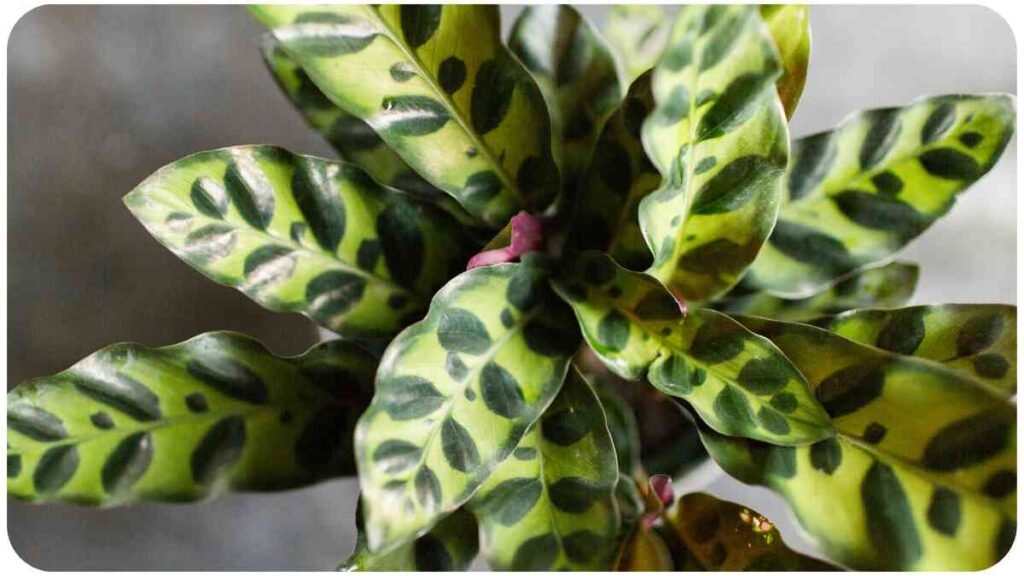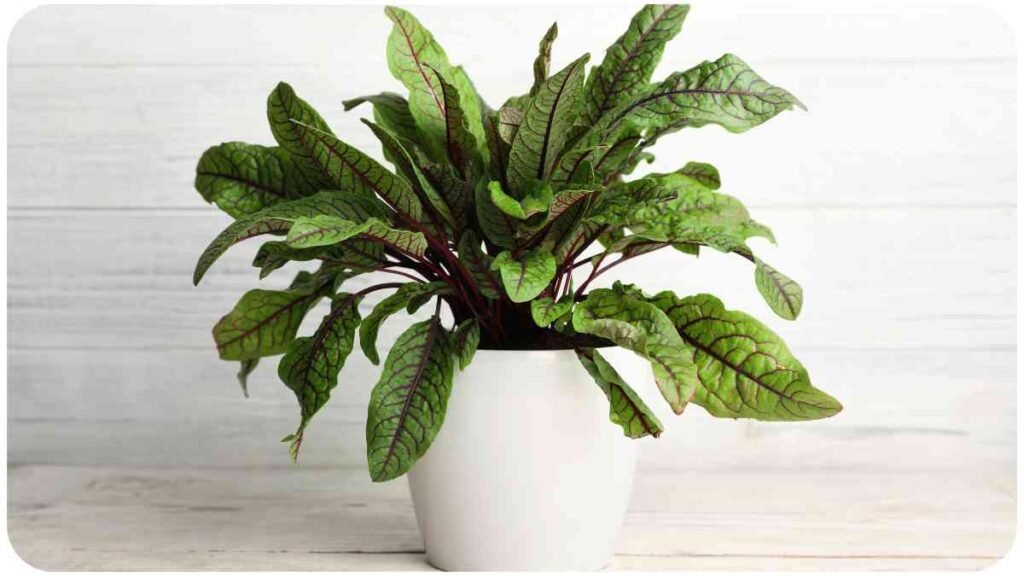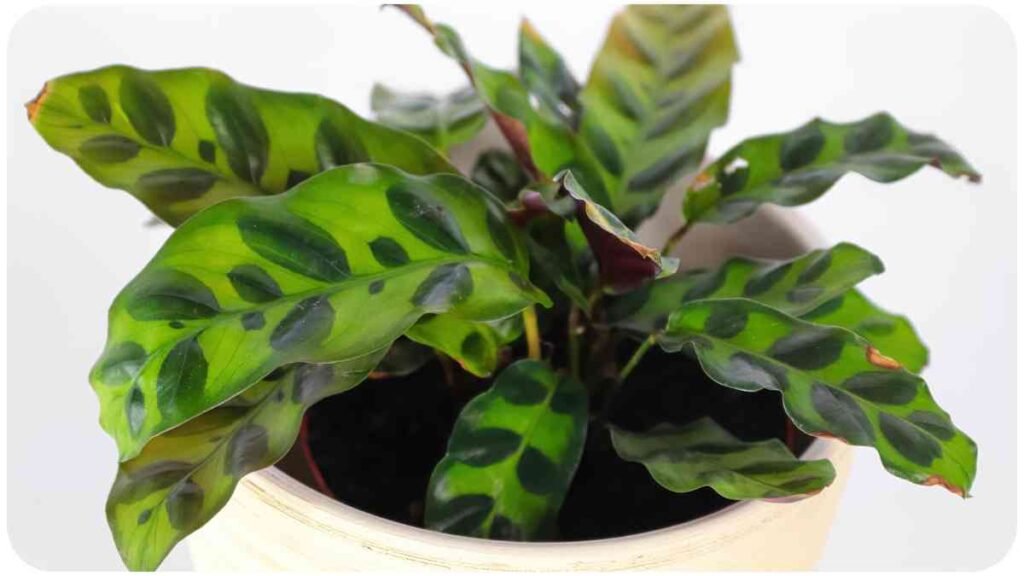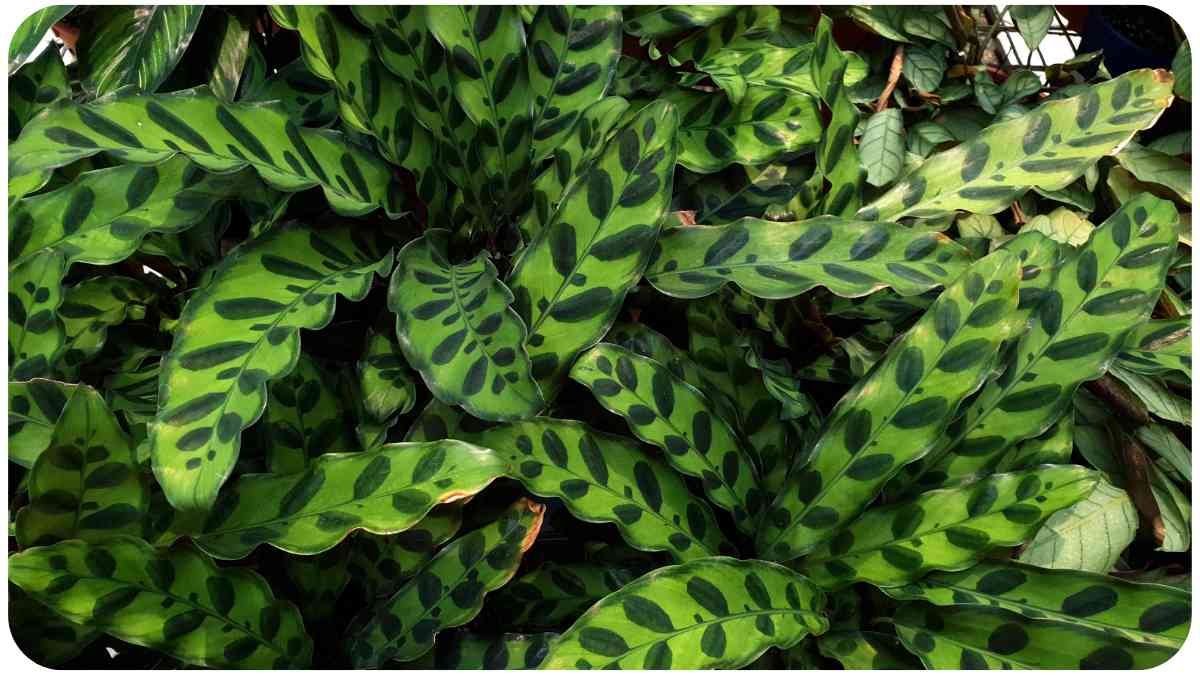As a plant enthusiast, there’s nothing more disheartening than seeing your vibrant rattlesnake plant drooping.
In this comprehensive guide, we’ll delve into the various reasons behind this issue and equip you with practical solutions to revive and maintain the health of your cherished plant.
| Takeaway |
|---|
| 1. Identify the Specific Issue: Determine if your rattlesnake plant is drooping due to overwatering, underwatering, lighting issues, or temperature extremes. |
| 2. Careful Watering Practices: Adjust your watering routine based on the specific needs of your plant, avoiding both overwatering and underwatering. |
| 3. Optimize Lighting Conditions: Provide the right balance of light for your rattlesnake plant’s health, considering its unique variety. |
| 4. Address Temperature Extremes: Maintain a stable temperature to prevent stress and promote optimal growth. |
| 5. Combat Pests and Diseases: Regularly inspect for pests, and promptly address any infestations or signs of diseases. |
| 6. Revive Through Pruning: Prune strategically to encourage healthier growth and address specific issues. |
| 7. Consider Repotting Wisely: Repot if necessary, ensuring the right pot size and soil composition. |
| 8. Fertilize Appropriately: Understand the importance of fertilizing and choose the right fertilizers for rattlesnake plants. |
| 9. Preventive Measures: Regularly inspect your plant, create a healthy environment, and learn from expert tips to prevent issues. |
| 10. Explore Further Resources: Delve into additional reading and engage with online communities for ongoing support and knowledge. |
Understanding Rattlesnake Plants

2.1 Overview of Rattlesnake Plants
Rattlesnake plants, scientifically known as Calathea lancifolia, are renowned for their striking foliage and unique patterns. These plants, native to the Brazilian rainforests, have become popular choices for indoor gardens due to their low-maintenance nature.
Wondering why your Angelonia is struggling? Learn the secrets of optimal care, from soil choices to sunlight exposure. Explore angelonia plant care for a flourishing garden.
2.2 Common Varieties
Before we dive into troubleshooting, let’s explore the different varieties of rattlesnake plants. Understanding the specific type you have can provide insights into its unique care requirements.
2.3 Ideal Growing Conditions
Rattlesnake plants thrive in specific environmental conditions. We’ll discuss the ideal temperature, lighting, and watering conditions to keep your plant flourishing.
Signs of a Drooping Rattlesnake Plant

3.1 Wilting Leaves
Wilting leaves are often the first noticeable sign of distress in a rattlesnake plant. We’ll explore the potential causes behind this common issue.
Does your Lemon Cypress look dry and dull? Discover the art of revival, combating dryness, and restoring vibrancy. Dive into lemon cypress care for a rejuvenated landscape.
3.2 Changes in Color
The vibrant colors of rattlesnake plants can fade or change, signaling underlying problems. Let’s uncover the reasons behind these color variations.
3.3 Unusual Stem Behavior
Observing the stems can reveal a lot about the plant’s overall health. We’ll discuss what to look for when examining the stems of your rattlesnake plant.
Root Causes of Drooping
4.1 Watering Issues
4.1.1 Overwatering
Overwatering is a common culprit behind drooping rattlesnake plants. We’ll explore how to identify and rectify this issue, preventing root rot and other complications.
Frustrated with a non-blooming ice plant? Uncover the mystery behind this botanical puzzle and revitalize your blooms. Explore ice plant blooming tips for a blossoming garden.
4.1.2 Underwatering
On the flip side, underwatering can also lead to drooping. We’ll discuss the signs of dehydration in your plant and offer practical tips on proper watering.
4.2 Lighting Problems
Insufficient or excessive light can have detrimental effects on your rattlesnake plant. Learn how to strike the right balance to promote healthy growth.
4.3 Temperature Extremes
Rattlesnake plants are sensitive to temperature fluctuations. Discover how extreme temperatures can impact your plant’s well-being and how to provide a stable environment.
Pests and Diseases
5.1 Common Pests
Pests can wreak havoc on rattlesnake plants. Identify common invaders and implement effective pest control measures to protect your green companion.
Embark on a journey to grow a thriving Cryptomeria Globosa Nana. Master the essentials, from planting to maintenance. Discover Cryptomeria care tips for a lush and healthy garden.
5.2 Diseases Affecting Rattlesnake Plants
Certain diseases can cause your plant to droop. We’ll discuss symptoms, prevention, and treatment options to keep your rattlesnake plant disease-free.
Reviving a Drooping Rattlesnake Plant
6.1 Adjusting Watering Practices
Now that we’ve identified watering issues as a potential cause, let’s delve into the specifics of adjusting your watering routine to nurse your plant back to health.
6.2 Correcting Lighting Conditions
Improving lighting conditions is crucial for the recovery of a drooping rattlesnake plant. Discover how to optimize light exposure for your specific plant variety.
6.3 Temperature Management
Maintaining a consistent temperature is key to promoting recovery. We’ll discuss strategies to create an environment that fosters optimal growth.
Dive deep into the world of Cryptomeria Globosa Nana care. Unlock the secrets to its well-being and vibrant appearance. Delve into Cryptomeria care for a garden filled with beauty and elegance.
Repotting and Soil Considerations

7.1 Choosing the Right Pot
The choice of pot can significantly impact the well-being of your rattlesnake plant. Learn about the factors to consider when selecting a new pot and how it can aid in the revival process.
7.2 Soil Composition
Soil is the foundation of your plant’s health. We’ll explore the ideal soil composition for rattlesnake plants, including essential nutrients and drainage considerations.
7.3 Proper Repotting Techniques
If repotting is necessary, doing it right is crucial. We’ll provide a step-by-step guide to ensure a seamless transition for your rattlesnake plant without causing additional stress.
Pruning for Healthier Growth
8.1 Identifying Pruning Needs
Pruning can revitalize a drooping rattlesnake plant. Discover how to identify the areas that require trimming and promote healthier, more robust growth.
8.2 Step-by-Step Pruning Guide
Follow a detailed pruning guide to trim your rattlesnake plant with confidence. We’ll cover the tools you need and the techniques to employ for optimal results.
Fertilization Tips
9.1 Importance of Fertilizing
Proper fertilization is a key aspect of rattlesnake plant care. Understand the importance of fertilizing and how it contributes to the overall health and vibrancy of your plant.
9.2 Best Fertilizers for Rattlesnake Plants
Not all fertilizers are created equal. We’ll recommend the best fertilizers for rattlesnake plants, ensuring you provide the essential nutrients without causing harm.
Preventive Measures
10.1 Regular Inspections
Prevention is the best medicine. Learn the importance of regular inspections and how early detection of issues can save your rattlesnake plant from severe damage.
10.2 Creating a Healthy Environment
Explore holistic approaches to create a healthy environment for your rattlesnake plant. From humidity levels to companion plants, we’ll cover various factors that contribute to overall well-being.
Learning from Experts
11.1 Expert Tips for Rattlesnake Plant Care
Gain insights from seasoned experts in the field of rattlesnake plant care. We’ll share valuable tips and advice from professionals who have successfully nurtured these unique plants.
11.2 Success Stories in Reviving Drooping Plants
Real-life success stories can be both inspiring and instructive. Explore instances where enthusiasts faced challenges with drooping rattlesnake plants and successfully revived them, learning from their experiences.
Conclusion
In conclusion, reviving a drooping rattlesnake plant requires a combination of careful observation, targeted interventions, and a proactive approach to overall care. By understanding the specific needs of your plant and implementing the tips provided in this guide, you can ensure a healthy and thriving rattlesnake plant.
Further Reading
- Plantify: Rattlesnake Plant Care Instructions
- Explore detailed care instructions for rattlesnake plants on Plantify’s website. This comprehensive guide covers watering, lighting, and other essential aspects to keep your plant thriving.
- Petal Republic: Why Is Your Calathea Plant Drooping?
- Petal Republic provides insights into the reasons behind Calathea (including rattlesnake plants) drooping. Learn about common issues and practical tips for maintaining healthy plants.
- Fiddle and Thorn: Troubleshooting Rattlesnake Plant Drooping
- Find troubleshooting advice for your drooping rattlesnake plant on Fiddle and Thorn. This resource offers practical solutions and expert insights to revive and care for your plant.
FAQs
Why is my rattlesnake plant drooping?
Rattlesnake plants can droop due to various reasons, including overwatering, underwatering, lighting issues, and temperature extremes. Identifying the specific cause is crucial for effective treatment.
How can I tell if my rattlesnake plant is underwatered?
Look for signs such as wilting leaves, dry soil, and a generally dehydrated appearance. Adjust your watering routine to provide adequate moisture without overwatering.
What are common pests affecting rattlesnake plants?
Common pests include spider mites and aphids. Regularly inspect your plant for any signs of infestation and take prompt action to prevent further damage.
Is repotting necessary for a drooping rattlesnake plant?
Repotting may be necessary if the plant has outgrown its current pot or if there are issues with the soil. However, ensure that you follow proper repotting techniques to minimize stress on the plant.
Can pruning help revive a drooping rattlesnake plant?
Pruning can be beneficial for promoting healthier growth and addressing specific issues. Identify areas that need trimming and follow a step-by-step pruning guide for best results.

Hellen James, a seasoned author at Unified Publishers LLC, brings a wealth of expertise to diverse niches. Specializing in pet care, outdoor adventures, lifestyle, wellness, and culinary delights, Hellen crafts insightful and engaging content that unlocks the full potential of readers’ interests. Explore, learn, and thrive with Hellen James.

